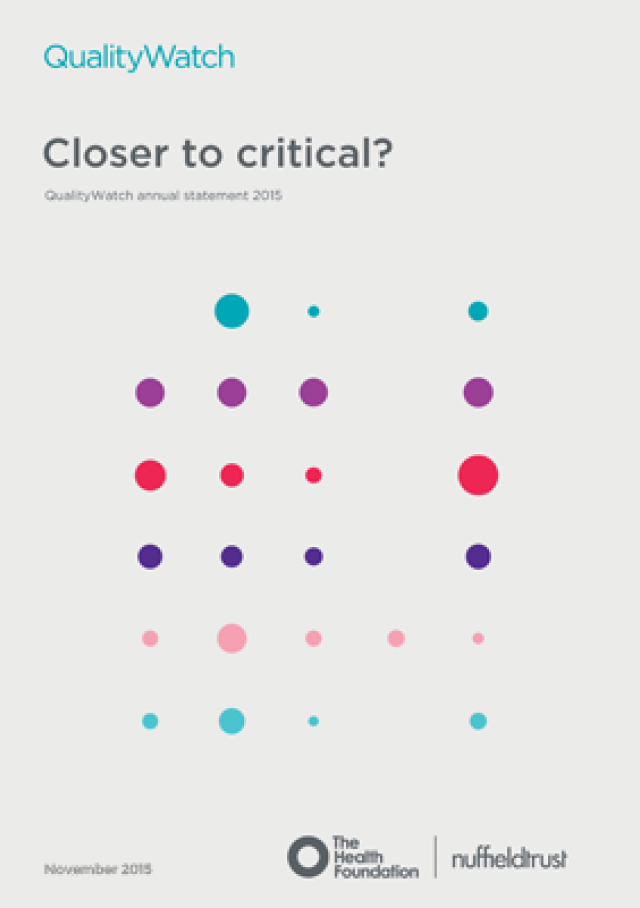Closer to Critical? QualityWatch annual statement 2015
November 2015

Key points
- Care services are improving in many areas, with reduction of harm to children, a fall in unplanned admissions for children and young people with chronic conditions, and high vaccination and screening rates. In addition, there have been continued improvements in the measurement and delivery of safety in hospital settings.
- However, there are increasingly clear signals that quality in some areas is declining and access to hospital, mental health and social care services continues to deteriorate. Performance against some key waiting times has returned to the levels achieved in the late 2000s, and access to some services now appears to be on a consistent downward trend.
- Given the relationship between engaged staff and good quality care, there is a substantial risk that the current staffing situation in health and social care may be affecting the care received by patients. There are worrying indications of stress, high vacancy rates and increases in bullying, which should be of major concern to managers and policy-makers.
- The NHS still lacks vital information to provide a full picture of the quality of its services. This impairs its ability to plan properly, which will make it even harder for it to achieve the £22 billion in efficiency savings it has been tasked with achieving by 2020/21. Improving the visibility of quality is crucial, as sustained financial constraint brings the debate of quality versus cost more to the fore than it has been for some time.
In this third annual statement from the QualityWatch programme, our aim is to help policymakers, health care leaders, patient groups and others make sense of quality across health and social care, primarily in England.
Drawing on analysis of over 300 indicators of care quality – from waiting times to staffing levels – and several in-depth studies, we track how health and social care services are managing at a time of huge change. Our programme looks at national-level, year-on-year changes and tries to place them in a wider long-term context, so that we can better understand which areas are performing well and which need attention.
In our first year (2013) we found that the historic gains made by the NHS throughout the 2000s were, on the whole, being maintained, although problems were beginning to emerge in urgent care services. Last year, we acknowledged that things were still better than a decade ago, but pointed to a marked deterioration in many measures of access, raised questions about the quality of mental health services, and noted worsening conditions for staff in the NHS and social care.
This year, we have focused our analysis on three important areas of concern: (1) how easily patients can access care; (2) how engaged and motivated the workforce is; and (3) how well we look after the health needs of children and young people.
The first decade of the century saw major investment in health services and some historic gains in performance, particularly in reducing waiting times. However, our third annual assessment of the quality of care in England reveals that improving – or at least maintaining – quality is proving more challenging than in recent times.
Downloads
Work with us
We look for talented and passionate individuals as everyone at the Health Foundation has an important role to play.
View current vacanciesThe Q community
Q is an initiative connecting people with improvement expertise across the UK.
Find out more

